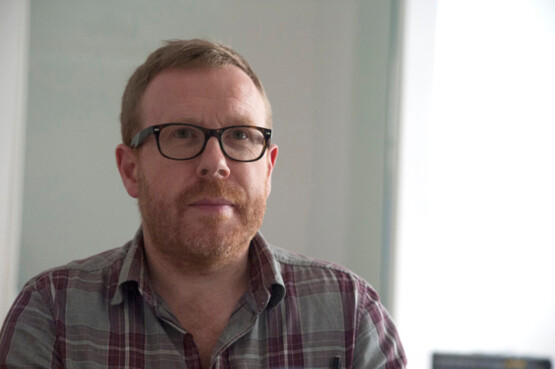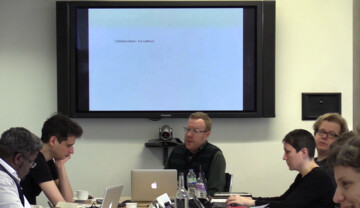bio | John Byrne is currently a Senior Lecturer in Fine Art at Liverpool John Moores University (LJMU) and Co-Director of Static. He is also LJMU’s coordinator for ‘The Uses of Art -The Legacy of 1848 and 1989’ Project and is currently developing research for LJMU’s School of Art and Design around the area of art, use and use value. Central to this research is an ongoing evaluation of the kind of work, or labour, that the work of art is becoming in a globalised and networked society. Over the last two decades, Byrne has published internationally on issues of art, technology and popular culture. From 2010 onward Byrne has been a member of the Editorial Board of the Autonomy Project alongside Charles Esche, Annie Fletcher, Steven ten Thije and Clare Butcher (‘The Autonomy Project’ was a long-term research collaboration between Van Abbe Museum NL, The Dutch Art Institute, NL, Filter – Hamburg/Detroit, DE/USA, Grizedale Arts, UK, Lectoraat Kunst en Publiek Ruimte, NL, Onderzoekschool Kunstgeschiedenis & Platform Moderne Kunst, NL, Onomatopee, NL and the University of Hildesheim, NL). Byrne is also an active participant/co-curator of the ‘Office of Useful Art’ Project, in collaboration with Grizedale Arts, MIMA (Middlesbrough Institute of Modern Art), Liverpool John Moores University, Tate Liverpool and the Visible Project. As Co-Director of Static Gallery Byrne has collaborated on the production and curation of ‘Press-Corps’ (Gwangju Biennial 2006), ‘You’ll Never Walk Alone’ (an installation by Frederic Pradeau) 2006, Exit Cork 2007, ‘The Inevitable Show (reproducing fame): Damien Hirst, Michael Riedel, Static’ (Glucksman Gallery Cork) 2008, ‘Noodle Bar’ (Seoul/Liverpool) 2008, ‘Terminal Convention’ (Cork) 2011 and ‘Noodle Bar/Paul’s Kimchi Co’ at Van Abbemuseum 2014. Other written publications by Byrne include Modernism and Meaning: Reading the Intervention of Brtish Video Art in the Gallery Space: Published in ‘Diverse Practices: A Critical Reader on British Video Art’, Ed. Julia Knight, University of Luton Press/Arts Council England, Pp. 239-259; Cybersublime: Representing the Unrepresentable in Digital Art and Politics: Published in ‘Third Text: Third World Wide Web Special Issue’, Vol. 47, Summer 1999, pp. 27 – 38; Why Bas? Brit’ Pop in the Age of Reality TV: Published in ‘Us and Them: Static Pamphlet’, eds. Becky Shaw and Gareth Woollam 2003 – 04, pp. 51 – 57; Contemporary Art and Globalisation Biennials and the Emergence of the De-Centred Artist: Published in International Journal of the Humanities’, 2005/2006 in Melbourne, Australia; The Yes Men: Art and the Culture of Corporate Capital: Published in ‘Keep it Slick: Infiltrating Capitalism with the Yes Men’ 2009, Carnegie Mellon, Chicago 2009; Critical Autonomy: Inside Out and Outside In: Published in ‘The Autonomy Project Newspaper 1 ‘Positioning’’, The Autonomy Project: Newspaper 1 – Positioning, Editors: Byrne JM, Ten Thije S, Butcher C. Newspaper 1: 14-21. Onomatopee, Netherlands 2010; Closing the Gap Between Art and Life: Digital Art as Discursive Framework: Published in ‘Emerging Digital Spaces in Contemporary Society: Properties of Technology’, 2011. pp. 219-220, Palgrave Macmillan, England 2011; Grizedale Arts, Use Value and the Little Society: Published in ‘Afterall’, 30, Summer 2012; Back to the Future: Grizedale Arts, Use Value and the Work of Art: Published as part of the Coniston Institute’s Online ‘New Mechanics Library‘ project, January 2015; Back to the Future - Confessions of the Imperfect: 1848 - 1989 – Today: L’Internationale Online.
Note: The biography describes the position of the narrator at the time of their participation in the Glossary of Common Knowledge. Given the long duration of the project, the narrator may have changed their respective position.



